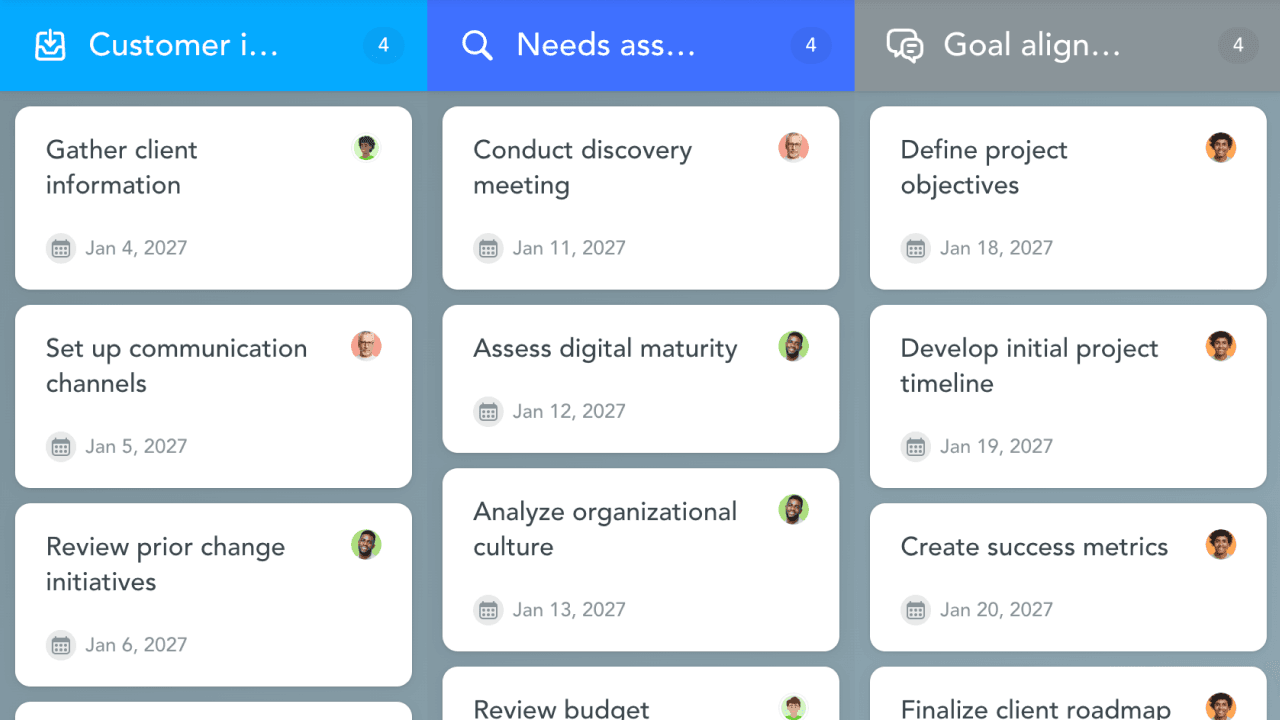What is resource management?
Resource management requires a lot of preparation and forward-thinking to be successful. Think of the role of resource management as similar to a wedding planner, whose job is to coordinate all the logistics involved in planning a smooth and successful wedding. As a project manager, effective resource management ensures:
All resources are allocated to complete necessary tasks
Resource efficiency is maintained throughout the entire project
Profitability improves as a result of resource efficiency
Additionally, by sticking to the principles of effective resource management, your team will help achieve project goals by:
Completing tasks on time and on budget
Making their own strategic contributions to improve resource management
Successful resource management helps your team execute projects with greater efficiency and effectiveness. The net outcome of your efforts equals reduced operating expenses and higher profitability for your organization.
When to use the resource management template?
A digital resource management template ensures your organization:
Maintains a centralized space to track team workloads
Visualizes how bandwidths and available resources change over time
Has the means to update tasks, deadlines, and priorities
Can identify and eliminate bottlenecks that stall project progress
While the resource management template provides a helpful, ready-to-use structure, it’s also extremely flexible. It can be adapted to any number of industries, from banking and manufacturing to real estate.
Let’s say you’re a real estate company scheduling multiple open houses for listed properties. Your team includes several agents and contractors who must each perform tasks to prepare those properties for the open houses. You can use the template to assign resources for each team member and the tasks they are responsible for. By tracking your team’s performance and adjusting your resources accordingly, you can deliver the best experience in the most resource efficient way, every single time.
How to use the resource management template
The resource management template provides a structured method to organize your resources into four distinct sections: agents, contractors, budgets, and equipment/software.
Once you have your sections, create tasks for each resource that list your respective teammates, contractors, budgeted line items, and equipment tied to the project. Make sure to leave notes outlining the roles and responsibilities, as well as the purpose of the budgeted equipment, in service of the project goal.
Step 1: Create your Tasks
To get started, create a task for each resource (agent, contractor, budget, equipment). Do this by clicking the + icon in any project section.
Step 2: Add task details
In each task, add relevant details such as role responsibilities, availability, or any other information that describes how your resources will be used.
Update the tasks as needed with information about the prospective projects and allocation dates. Include these details in the task description for a clear overview that you can refer back to at any time.
Step 3: Manage your resources
To manage your resources:
Assign your tasks and drag and drop them to the appropriate section on the template.
Update the task with additional project details, including start and completion dates, to create an efficient resource management workflow.
Periodically review your resources and ensure tasks are being completed on time and on budget.
Step 4: Monitor and adjust your resources as needed
Keep an eye on how resources are used and how efficiently they’re being put to work. You can adjust how your resources are assigned based on:
Project performance and needs
Changes in project budgets or timelines
New information about your resources
For example, a team member might be off sick, and so you have to reassign their responsibilities to someone else. Or, to refer back to the real estate open house example, a property included in the list of open houses may suddenly be taken off the market. This would require you to change your strategy and reorganize your resources. Use your template to keep track of these changes by:
Deleting resources that are no longer relevant for your particular project
Reallocating tasks or creating new ones to reflect the status quo
Step 5: Refine and optimize the process
As you use the template, you’ll notice ways you can adapt it to work for your particular workflow. To help you optimize your process faster and more effectively:
Encourage team members to provide open feedback on how resources are utilized.
Generate regular reports on resource efficiency and identify areas for improvement.
Refine the workflow based on team feedback and data analysis. Consider adding new sections as needed.



